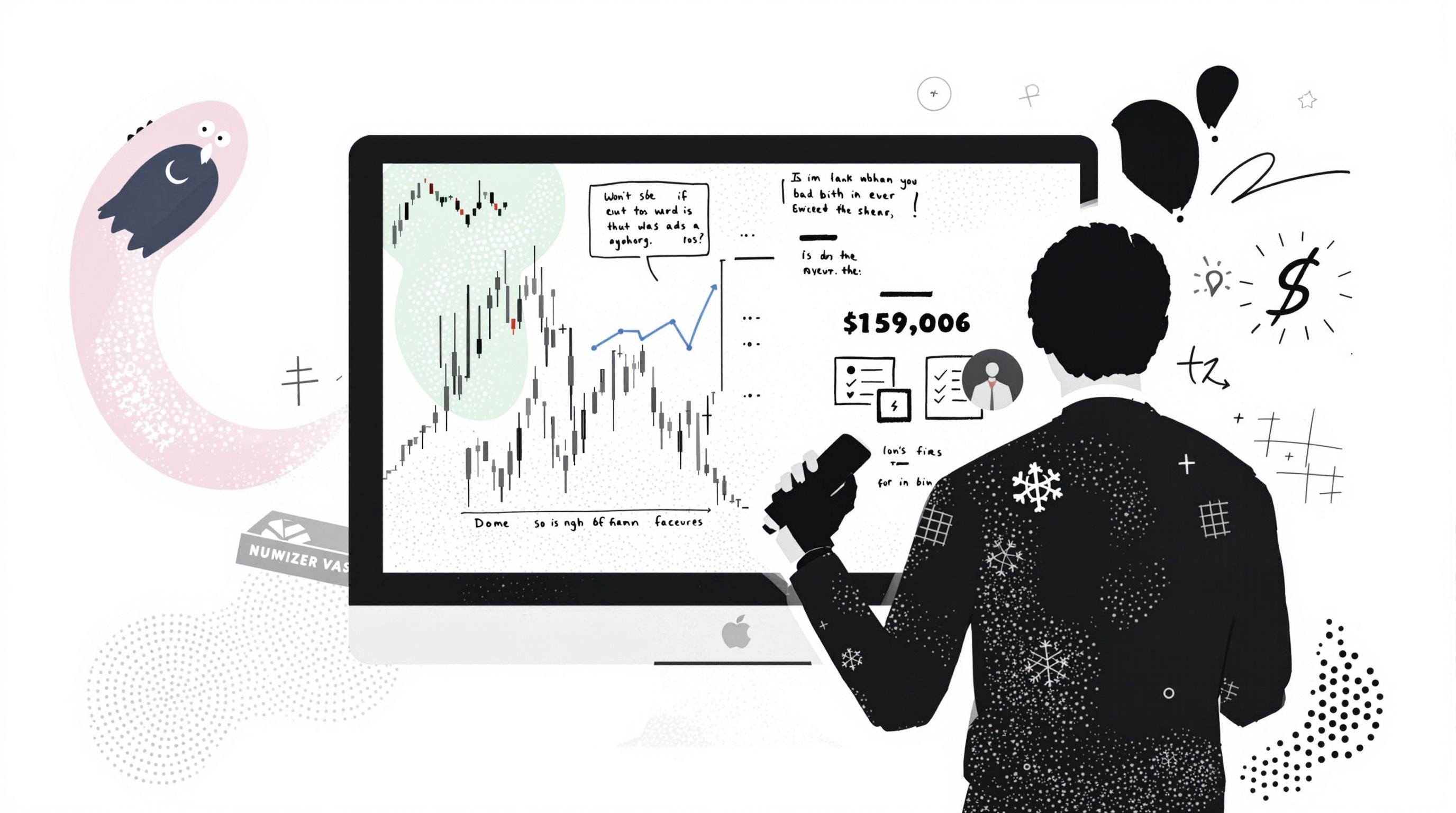Related Articles
- The Influence of Urban Legends: How Folklore Shapes Investor Behavior in Today's Financial Landscape
- The Role of Personal Narratives: How Your Story Shapes Investment Choices and Risk Tolerance
- The Ripple Effect: How Social Media Influencers Steer Investor Sentiment in Unexpected Ways
- Beneath the Surface: Investigating the Silent Influence of Underground Economies on Legitimate Market Trends
- Navigating the Bizarre: The Influence of Esotericism on Modern Investment Strategies and Market Speculation
- Rethinking Risk: The Surprising Link Between Urban Architecture and Financial Instability in Emerging Markets
The Role of Personal Narratives: How Your Story Shapes Investment Choices and Risk Tolerance
The Role of Personal Narratives: How Your Story Shapes Investment Choices and Risk Tolerance
Personal narratives are powerful tools that influence not only who we are but also how we approach risks and investments in our financial lives. This article dives into the complex interplay between our stories, investment choices, and overall risk tolerance, exploring various dimensions through narratives, statistics, and case studies.
Understanding Personal Narratives
Every person has a story—a collection of experiences and decisions that shapes their worldview. Your personal narrative is not just a reflection of your life events; it acts as a guiding compass for your investment choices. As we navigate our financial landscapes, our beliefs, fears, and motivations derived from our stories come into play.
The Psychology of Risk Tolerance
Risk tolerance is a psychological concept that describes an individual’s capacity to endure financial uncertainty. A famous study conducted by the American Psychological Association found that people with a higher level of self-efficacy—believing in their own ability to manage their financial situations—tend to take greater risks. If you’ve overcome obstacles in your life, like recovering from financial failure or achieving a significant career milestone, you might be more likely to embrace stock market fluctuations.
The Role of Childhood Experiences
Many financial habits are often formed in childhood. For instance, research shows that children who grow up in households that prioritize saving over spending often develop a lower-risk tolerance later in life. In contrast, those who witness their parents invest bravely in stocks might adopt a bolder approach in their financial dealings. This connection demonstrates that our personal narratives often begin to form long before we are conscious of our investment strategies.
One humorous take on this is recounted by a friend of mine, who grew up in a household where his mother treated every penny saved as a trophy. He observed her frugal habits, which turned into a "penny-pinching" narrative; even as an adult, he hesitated to invest in high-return stocks, opting for bonds instead. His dialogue with his mother turned into goofy banter about his ‘affliction’ of saving every cent.
Influences on Decision Making
A study conducted by the CFA Institute in 2021 highlighted that investors' emotional responses could have a significant impact on their investment choices. Those who have faced personal turmoil—such as whether it be a job loss or a traumatic event—are often more risk-averse. The statistics show that approximately 68% of respondents reported that their emotional experiences influenced their current investment strategies. This trend points to how intertwined our stories are with our financial choices.
Context Matters: A Case Study
Let’s look at the case of Michelle, a 35-year-old financial analyst who learned about investing from her grandfather. He often shared stories of his stock investments that paid off handsomely, which instilled a belief in her that the stock market could be incredibly rewarding. This belief guided her to take bold risks and a strong focus on equity investments. When the market dipped during the 2020 pandemic, while many were reevaluating their strategies and growing anxious, Michelle drew upon her narrative, viewing it as a temporary setback and a buying opportunity. She embraced the ‘buy the dip’ philosophy, which led to substantial, lucrative gains as the market recovered.
This anecdote reveals how her story played a crucial role in shaping her investment choices and managing her risk tolerance. It underscores the idea that our narratives can inspire confidence, leading us to act decisively when necessary.
Connecting with Your Narrative
The real challenge lies in identifying and understanding your personal narrative. Ask yourself: What experiences have shaped your relationship with money? Perhaps you’ve faced hardships that taught you the importance of saving, or you come from a lineage of risk-takers who view investments as a game of chance. These reflections can help you make more informed investment choices.
Age and Risk Tolerance: What’s the Trend?
Interestingly, age often plays a pivotal role in investment risk tolerance. Generally, younger investors tend to take more significant risks, believing they have time to recover from losses. According to a Gallup poll conducted in 2022, only 20% of investors aged 18-34 reported being very risk-averse compared to 55% of those aged 55 and above. The younger generation often embraces a narrative of opportunity, driven by potential growth. Their personal stories, filled with tech-savvy ventures and a more significant emphasis on innovation, encourage them to take calculated risks in the volatile world of cryptocurrency and startups.
Networking Narratives
Personal narratives extend beyond the individual; they also ripple through networks of friendships and professional relationships. Peer influence plays a huge role in shaping your decisions. For example, if you’re in a circle of friends who actively invest in real estate, their positive experiences can steer you away from your prudent, risk-averse tendencies. You may start feeling that urge to take risks, spurred on by the stories of their successes.
The Flip Side: Overcoming Poor Decisions
On the other hand, it’s vital to recognize how negative experiences alter our narratives and our willingness to embrace certain risks. Take Jake, a 22-year-old who invested a large portion of his savings in a flashy tech startup. When the company crashed, his self-esteem and confidence took a significant hit. His personal narrative shifted abruptly from one of adventure and innovation to one of caution and skepticism. He now sees investment as a source of anxiety, shaped by fear of the unknown.
As Jake’s story illustrates, negative experiences can lead to a detrimental cycle of risk aversion, often hindering future opportunities. The key lies in reframing these narratives, extracting lessons learned, and understanding that failure does not define one’s ability to succeed in the future.
Evaluating Your Investment Choices
To navigate this complex interplay of narratives and investment risk tolerance, one may ask: how can we better evaluate our choices? The first step is to assess your investment philosophy and strategies. Are they a reflection of your personal experiences, or are they influenced by external pressures? Journaling about your investment story can help clarify your motivations and fears, allowing you to craft stories that empower rather than limit your financial aspirations.
Creating a Positive Narrative
While many are trapped in their own looping narratives of caution and fear, it’s crucial to recognize the power of positive storytelling. For example, take the story of Emma, a retiree who learned how to invest after her husband passed away. Rather than letting financial concerns paralyze her, she set out to educate herself. Emma’s progressive narrative turned her fearful past into an empowering future as she discovered financial independence through wise investments. By reframing her experience, she created a new, optimistic perspective on her financial journey.
The Future: Personal Narratives and Digital Innovations
As we wade into an era driven by technology and innovation, personal narratives will continue to evolve. Investment options available today can seem dizzying—from cryptocurrencies to fractional shares. These choices reflect broader shifts in narratives and risk tolerance. Younger investors, in particular, are drawn to the allure of unique investment stories surrounding these new assets. Reports indicate that platforms like Robinhood have attracted over 13 million accounts, many being young people eager to engage with investing on their terms.
Conclusion: Your Story, Your Future
In conclusion, understanding the role of personal narratives in shaping investment choices and risk tolerance provides crucial insight into our financial behaviors. By reflecting on our stories, we can redefine our approach to investing, whether by embracing risk or practicing restraint. Everyone’s financial journey is unique, influenced by the multitude of individual experiences that tell a story. Whether you’re 16 or 70, recognizing and shaping your narrative will undoubtedly lead to more informed and heartfelt investment decisions.




